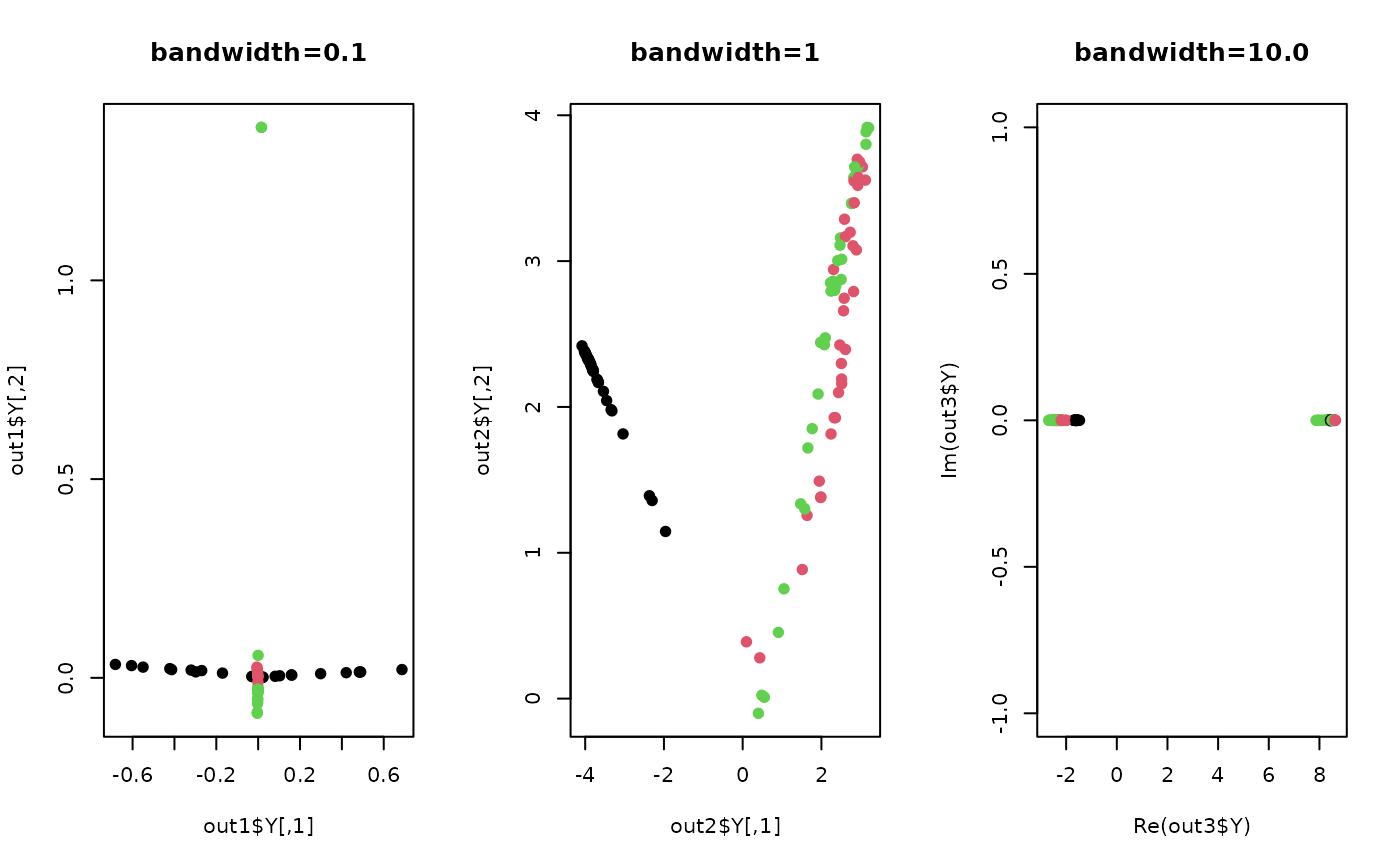Kernel Maximum Margin Criterion (KMMC) is a nonlinear variant of MMC method using kernel trick.
For computational simplicity, only the gaussian kernel is used with bandwidth parameter t.
do.kmmc(
X,
label,
ndim = 2,
preprocess = c("center", "decorrelate", "whiten"),
t = 1
)Arguments
- X
an \((n\times p)\) matrix or data frame whose rows are observations and columns represent independent variables.
- label
a length-\(n\) vector of data class labels.
- ndim
an integer-valued target dimension.
- preprocess
an additional option for preprocessing the data. Default is "center". See also
aux.preprocessfor more details.- t
bandwidth parameter for heat kernel in \((0,\infty)\).
Value
a named list containing
- Y
an \((n\times ndim)\) matrix whose rows are embedded observations.
- trfinfo
a list containing information for out-of-sample prediction.
References
Li H, Jiang T, Zhang K (2006). “Efficient and Robust Feature Extraction by Maximum Margin Criterion.” IEEE Transactions on Neural Networks, 17(1), 157--165.
See also
Examples
# \donttest{
## load iris data
data(iris)
set.seed(100)
subid = sample(1:150,100)
X = as.matrix(iris[subid,1:4])
label = as.factor(iris[subid,5])
## perform MVP with different preprocessings
out1 = do.kmmc(X, label, t=0.1)
out2 = do.kmmc(X, label, t=1.0)
out3 = do.kmmc(X, label, t=10.0)
## visualize
opar = par(no.readonly=TRUE)
par(mfrow=c(1,3))
plot(out1$Y, pch=19, col=label, main="bandwidth=0.1")
plot(out2$Y, pch=19, col=label, main="bandwidth=1")
plot(out3$Y, pch=19, col=label, main="bandwidth=10.0")
 par(opar)
# }
par(opar)
# }